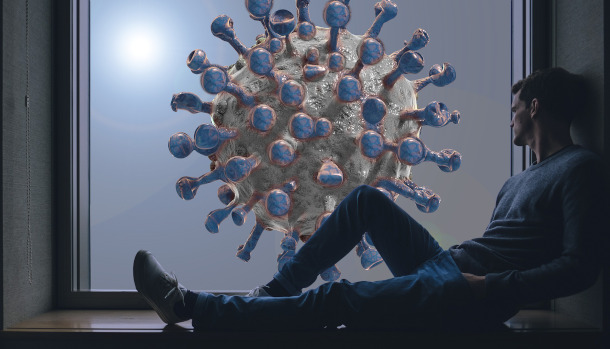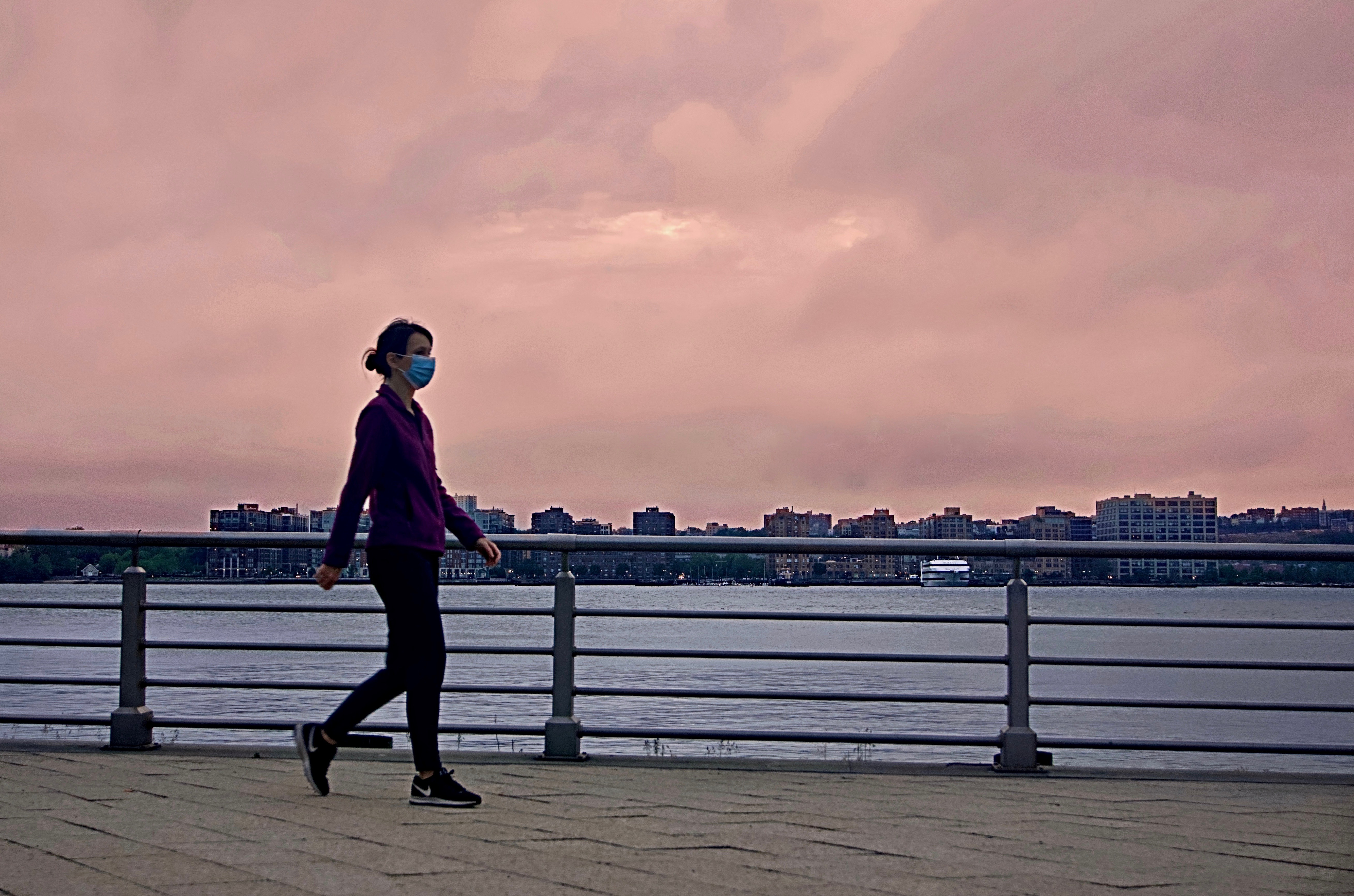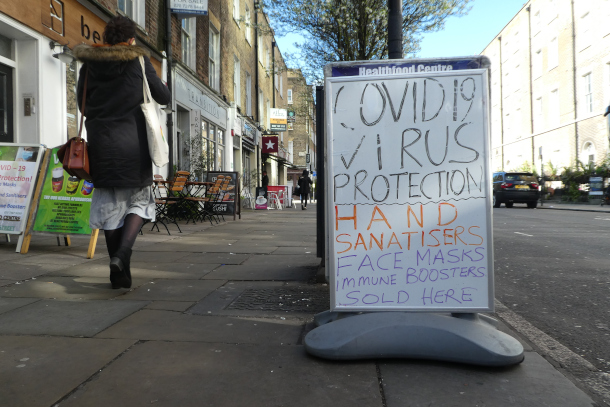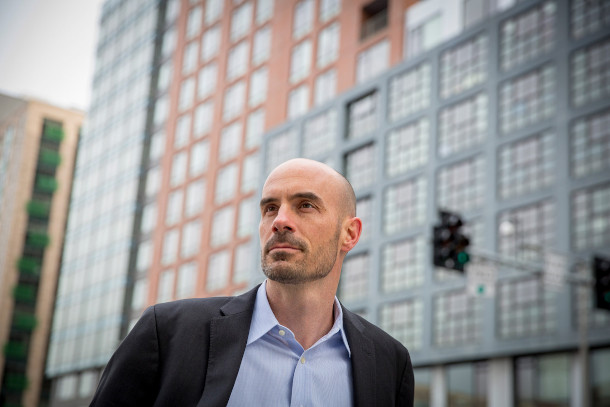COVID-19 and Healthy Buildings
Air Date: Week of June 12, 2020

Opening a window can help reduce the transmission of coronavirus indoors. (Photo: Gerd Altmann, Pixabay)
The pandemic continues to spread, with over 7 million confirmed cases of COVID-19 worldwide on June 12. And research has shown that much of this spread has happened indoors. Host Steve Curwood speaks with Joe Allen, Director of the Healthy Buildings Program at Harvard University, about the steps we can take in our own homes, buildings, and even cars to reduce the risk of transmitting the virus.
Transcript
CURWOOD: It’s Living on Earth, I’m Steve Curwood.
Love your neighbor, but stay away and wear a mask, especially indoors. That’s the ethos of the COVID-19 pandemic that has already taken more than one hundred thousand lives in the US and sickened four million people around the world. Direct sunlight, fresh air and heat can quickly disperse contagious virus particles in the air outdoors but inside those particles can linger in the air for three or more hours. Fortunately, there are ways to be safer indoors, according to Joe Allen who teaches at the T H Chan School of Public Health and directs the Healthy Buildings Program at Harvard University. I asked Professor Allen to explain how buildings can be set up to reduce the spread of the virus.
ALLEN: Well, you know, so buildings play a central role and we've long known historically that buildings that perform poorly can aid in the transmission of disease. We know this from thinking about measles in schools, and a classic example: one school girl goes into a building. Dozens get infected despite being vaccinated because of a poorly performing HVAC or mechanical air conditioning system. We see examples from the first SARS outbreak of one person going into a hotel, 16 other people become infected seeding a global outbreak, and even right from this SARS-CoV-2, this COVID-19 disease, we see examples from the cruise ships, the Biogen conference, the Kirkland senior homes and on and on all showing that the building plays a key role in transmitting that disease. The good thing is that we also know this means that the buildings are performing well that they can act as a first line of defense.
CURWOOD: Tell us everybody is really excited to hear from you just how healthy buildings can be brought into this fight against the coronavirus which, as we speak today, there's no vaccination, there's really kind of a bit of treatment for it?

A walker on the Chelsea Piers in Manhattan. Joe Allen advocates for public parks to remain open as long as social distancing is practiced. (Photo: Andreas Komodromos, Flickr CC BY-NC 2.0)
ALLEN: Yeah. So you know, when we think about buildings, we first have to think of how we're exposed to this virus. So quick little primer right three modes of transmission, large droplet transmission foamite, which is inanimate surfaces that act as a source of transference and airborne transmission. And healthy buildings can act on all three of these. So let's start with that airborne one, and how you would do that. So if you bring in a little more fresh outdoor air, you dilute airborne contaminants indoors, the real basics here. Second, if you're recirculating that air and many buildings do recirculate air, you want to enhance the level of filtration so that if there's any virus in the air, it's captured or impacted out on a high efficiency filter. Then in terms of other strategies, you want to enhance cleaning and disinfection, which addresses foamite transmission. And then of course, we have to do all these things that you and I and everybody else should be doing, maintaining physical distancing, hand washing, covering our coughs, staying home and sick. Those are not necessarily building controls, but we can't just say the building has the sole responsibility. We all have a role to play here. And so it's getting back to the basics of buildings and public health one on one right now, in terms of how we combat this disease and the indoor environment we know is key to the spread of this virus, but it can be leveraged in the fight against it.
CURWOOD: So Joe, one of the things I think I just heard you say is that if you open the windows in a building, that could help reduce the spread of this virus, how does into a transmission of the virus compared to being say completely outside?
ALLEN: Well, look, right. If you can be outside, you have unlimited dilution, so that's a good thing, right? I Marc Lipsitch and I at the Harvard School of Public Health with Ned Friedman, the director of the Arnold Arboretum at Harvard, have written a piece urging governments to keep parks open. They can be managed safely, the exposure risk is lower, if people behave as they should and take the proper appropriate precautions. But you're exactly right. You know, it's as simple as getting back to the basics, opening your windows a little bit at home, in your car if you're with other people, we did some modeling with Professor Rich Corsi and Jack Spengler that showed if you just crack the window three inches, you can significantly reduce the amount of virus in the air if someone is sick and shedding virus through coughing, sneezing, or just breathing. So it's the real basics here, bring in some more outdoor air.

As Joe Allen describes, COVID-19 spreads through large droplets, contaminated surfaces, and aerosol transmission. (Photo: Duncan C, Flickr CC By-NC 2.0)
CURWOOD: And remind us, Joe, of why the amount of virus matters in this situation. Why obvious if you roll the window down, there's still going to be some virus. Why does that make a difference?
ALLEN: Yeah, I like that you asked that because this is you know, my official professor title is a professor of exposure assessment science. And this is the basics of exposure science. You have to think about exposure at three variables really one is the intensity of the exposure. So how much are you breathing and exposed to, second is frequency and the third is duration. So let's make this really understandable. If you and I were together and I was infectious and I cough and we're close, well, that intensity is going to be high, just because we're close, it will be less intense if you're on the other side of the room. The frequency matters too, because if I cough once, that's a certain amount of viral shedding. If I cough every 10 seconds, that's a lot more, so the frequency is intense. And last is that duration factor. If we had a one minute conversation where I coughed, that's very different than if you and I sat together for a couple hours, and I'm frequently coughing and you're close by. So it's a combination of intensity, frequency and exposure. And if you can reduce all of those, you reduce your exposure and therefore ultimately reduce your risk.

Joe Allen directs Harvard’s Healthy Buildings program. (Photo: Courtesy of Joe Allen)
CURWOOD: So there's a lot of chatter, some people are saying, if people want to get together, it's better to meet outside. For example, if I have my daughter and her husband and their new baby, come and visit me be outside at the picnic table, there's a bit of a breeze. I'm going to be better off there?
ALLEN: Yeah, definitely. You know, we started out by saying social distancing, but I don't like the term. Really, it's physical distancing, right? We still want to connect we still need to connect with people and we can do this outside my family did this last weekend where everyone met in the backyard, each family had their own little corner on the deck. Maintain physical distancing, you know couldn't do the hugs are handshakes but that's okay. You know, it's just great to see people in person and you can do it outside. You know the family stayed in a pod or a cluster and we just maintain a minimum of six foot distance between people.
CURWOOD: Joe Allen is an Assistant professor at the T H Chan School of Public Health and directs the Healthy Buildings Program at Harvard University.
Links
The Washington Post | “Keep Parks Open. The Benefits of Fresh Air Outweigh the Risks of Infection”
Joe Allen’s latest book, Healthy Buildings: How Indoor Spaces Drive Performance and Productivity
Living on Earth wants to hear from you!
Living on Earth
62 Calef Highway, Suite 212
Lee, NH 03861
Telephone: 617-287-4121
E-mail: comments@loe.org
Newsletter [Click here]
Donate to Living on Earth!
Living on Earth is an independent media program and relies entirely on contributions from listeners and institutions supporting public service. Please donate now to preserve an independent environmental voice.
NewsletterLiving on Earth offers a weekly delivery of the show's rundown to your mailbox. Sign up for our newsletter today!
 Sailors For The Sea: Be the change you want to sea.
Sailors For The Sea: Be the change you want to sea.
 The Grantham Foundation for the Protection of the Environment: Committed to protecting and improving the health of the global environment.
The Grantham Foundation for the Protection of the Environment: Committed to protecting and improving the health of the global environment.
 Contribute to Living on Earth and receive, as our gift to you, an archival print of one of Mark Seth Lender's extraordinary wildlife photographs. Follow the link to see Mark's current collection of photographs.
Contribute to Living on Earth and receive, as our gift to you, an archival print of one of Mark Seth Lender's extraordinary wildlife photographs. Follow the link to see Mark's current collection of photographs.
 Buy a signed copy of Mark Seth Lender's book Smeagull the Seagull & support Living on Earth
Buy a signed copy of Mark Seth Lender's book Smeagull the Seagull & support Living on Earth

